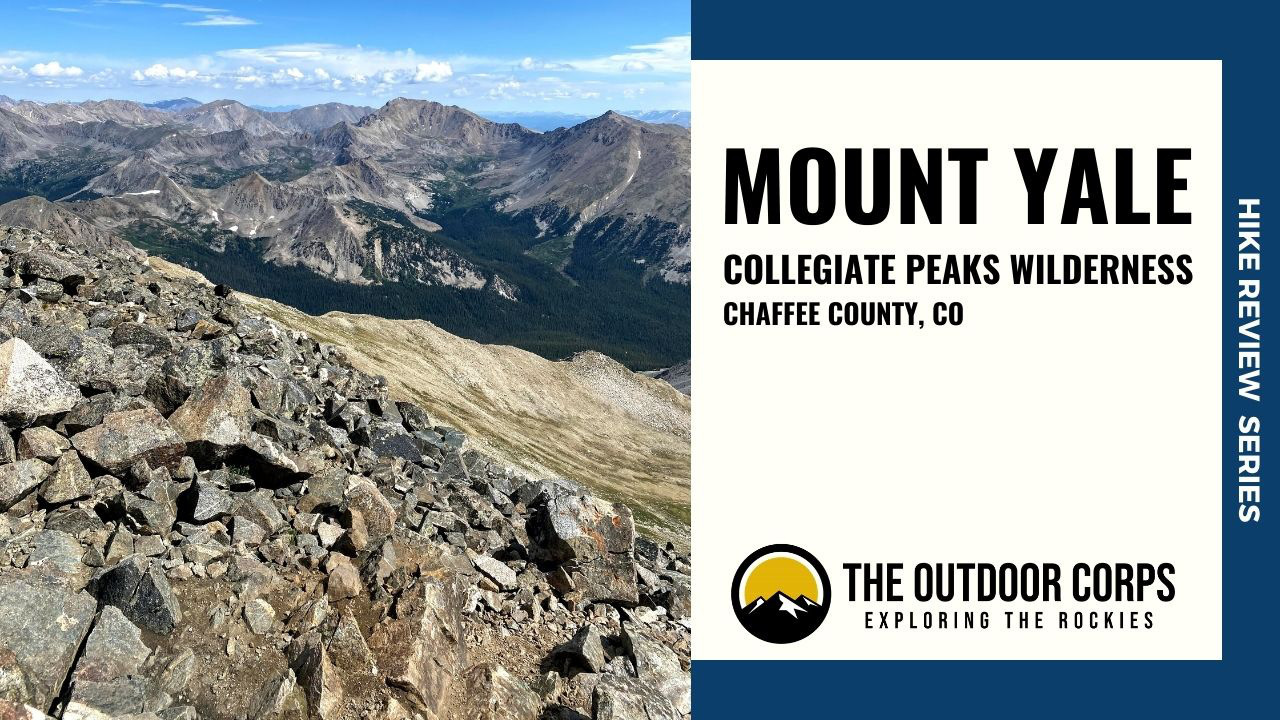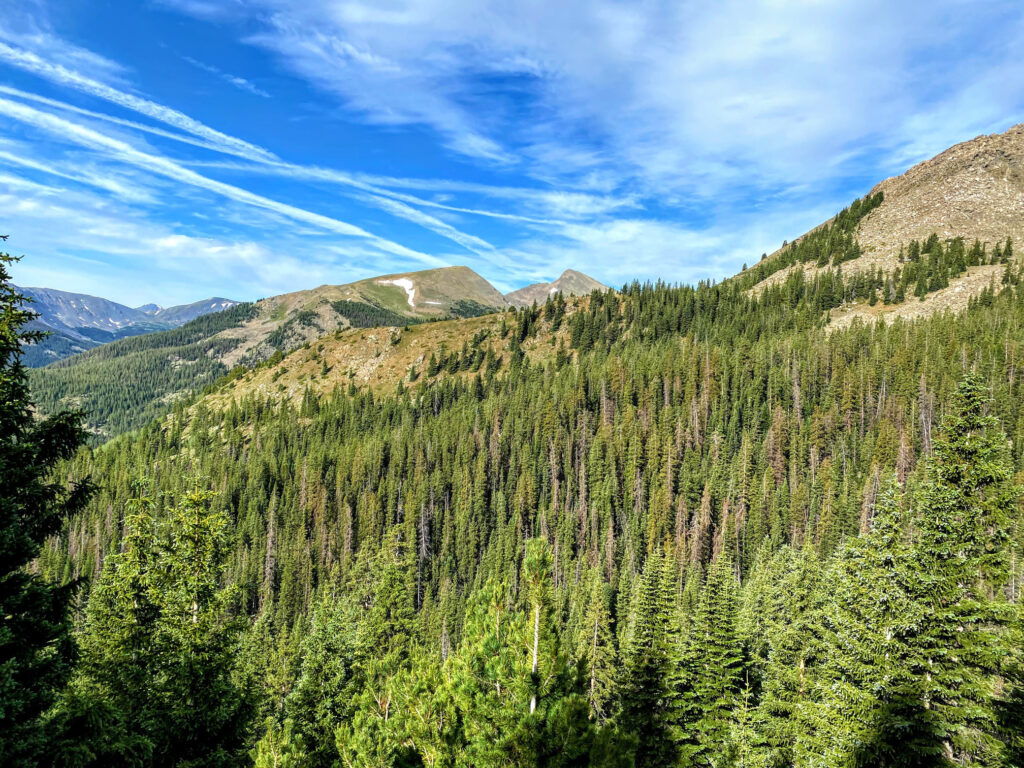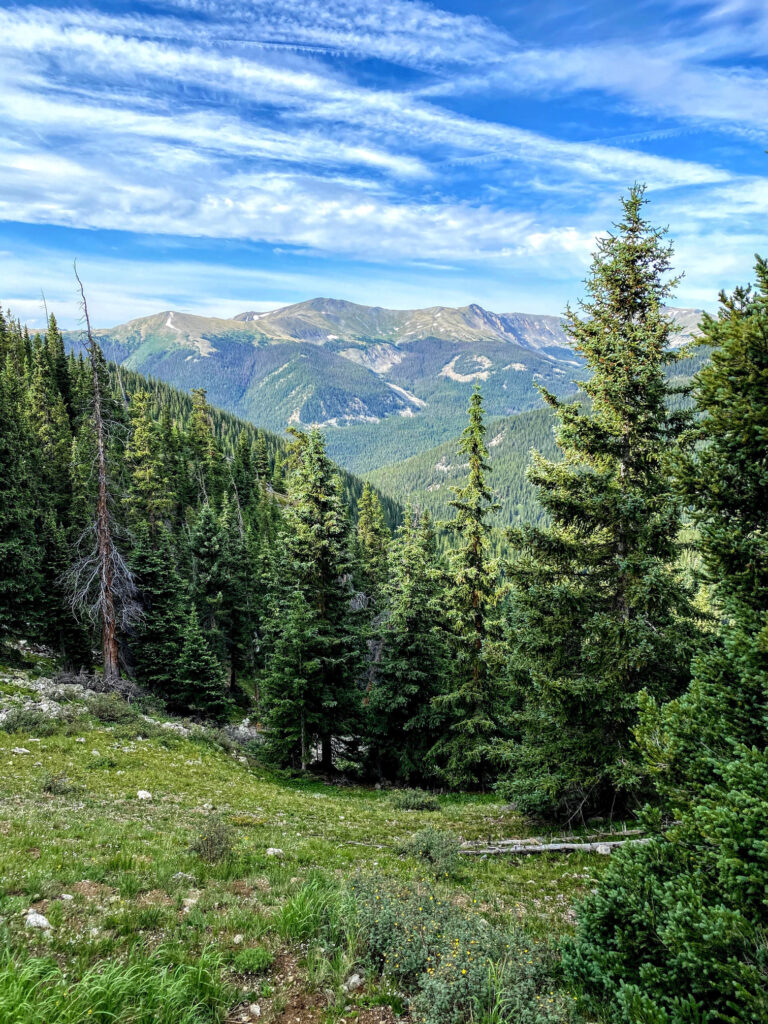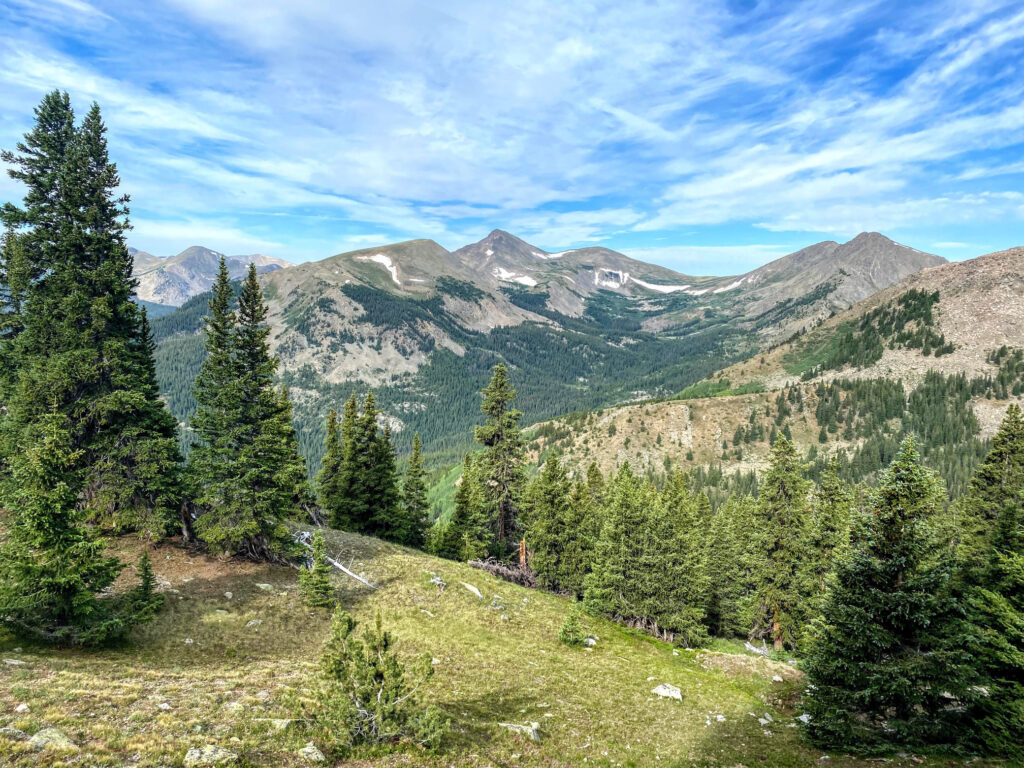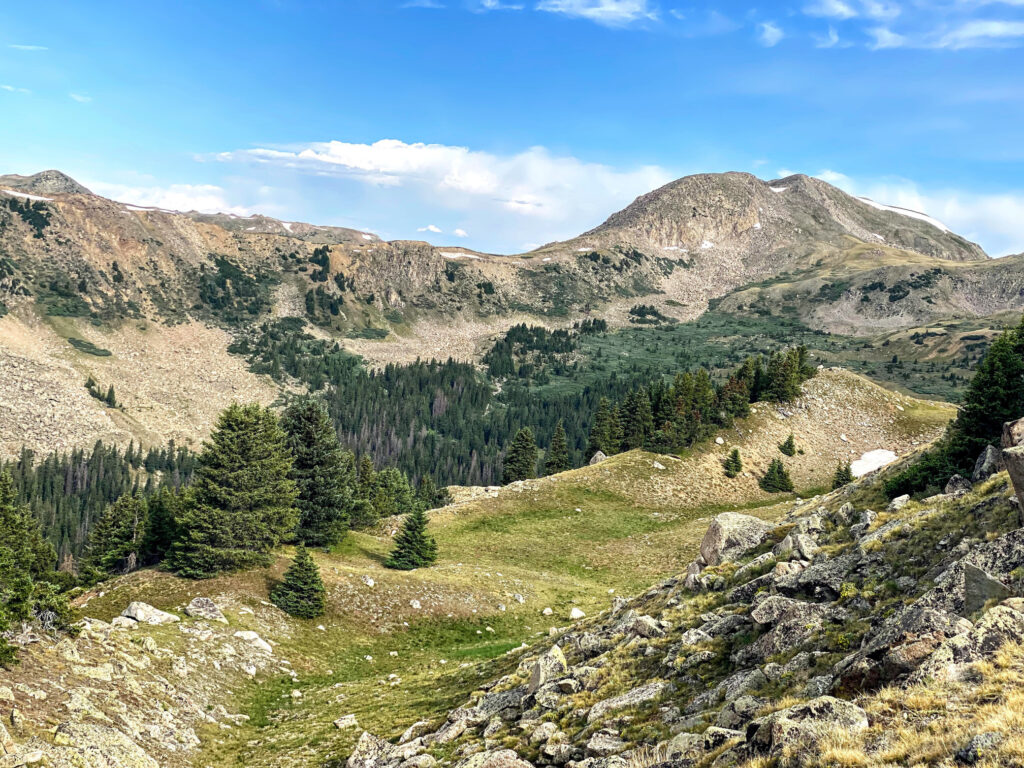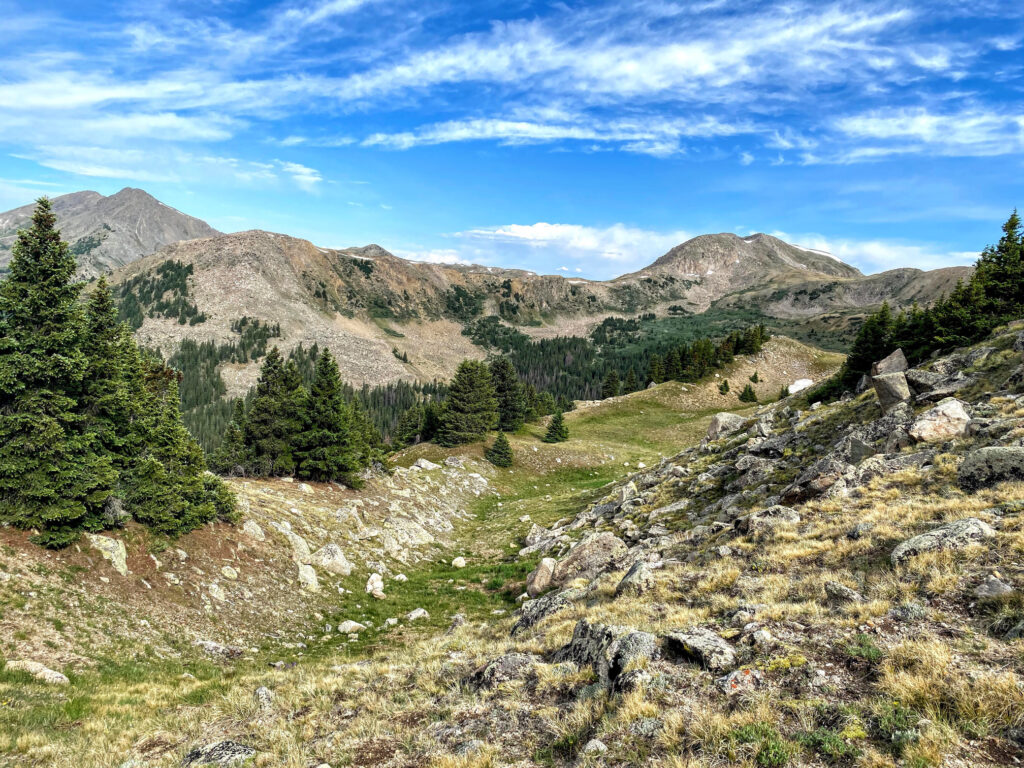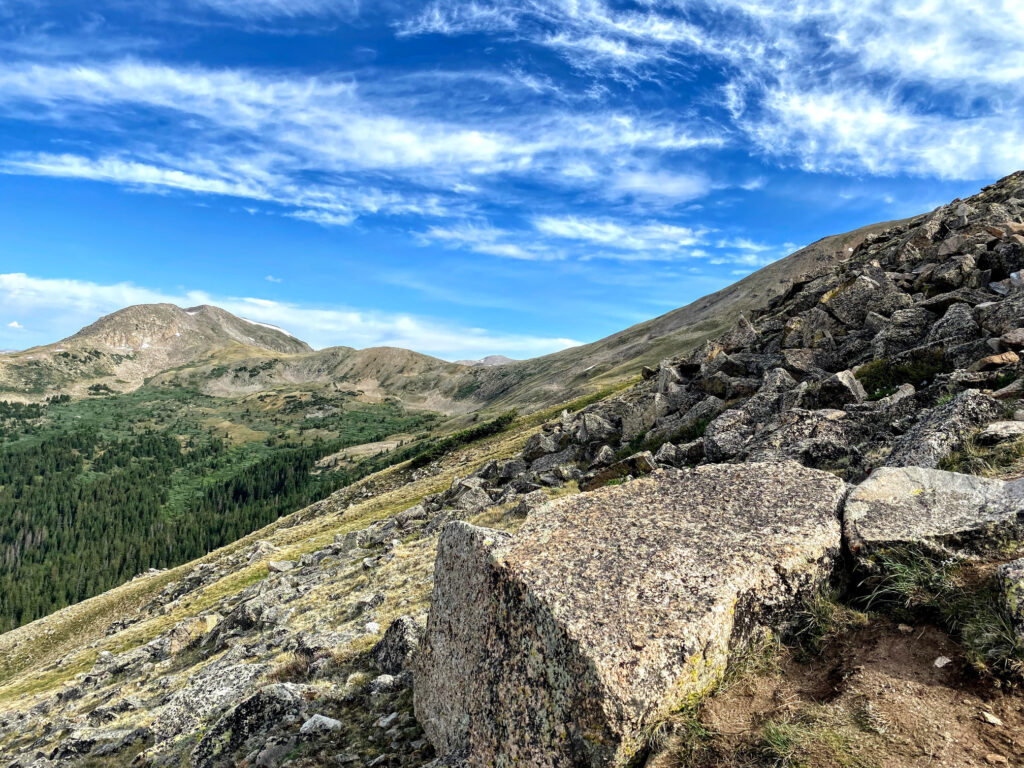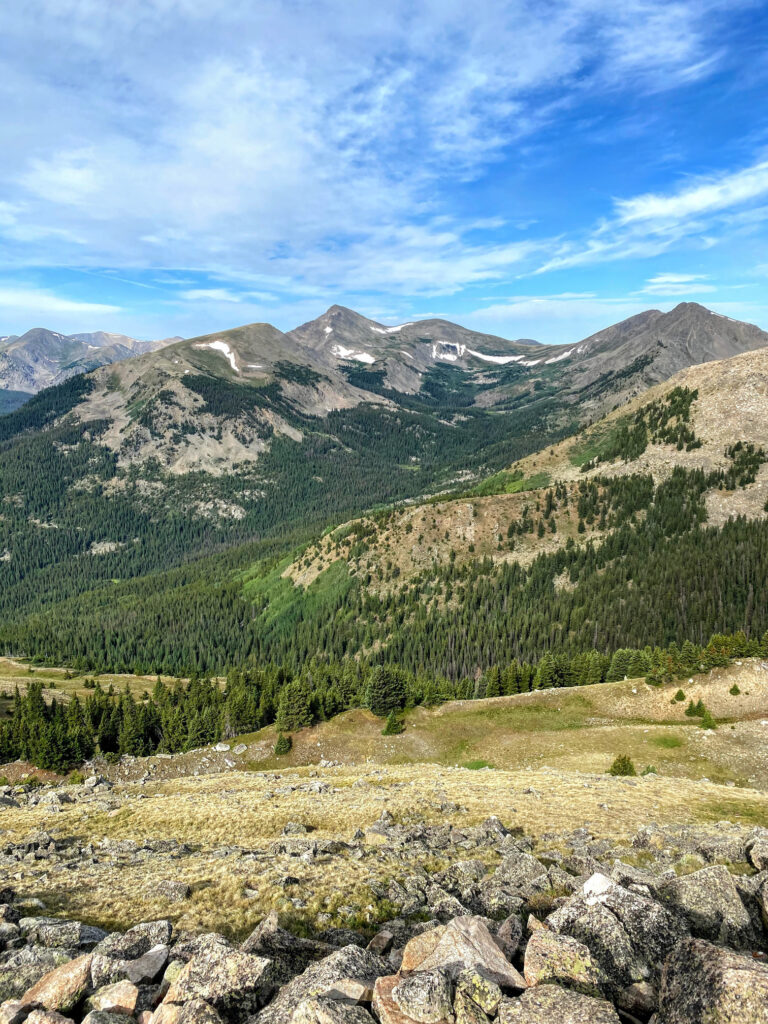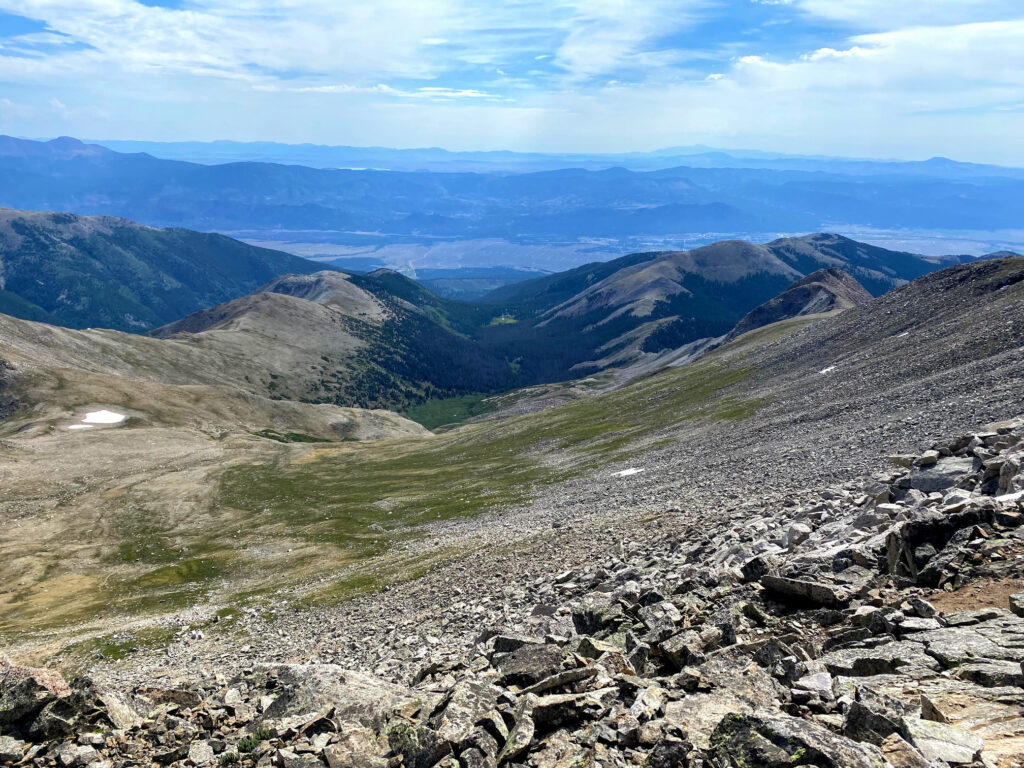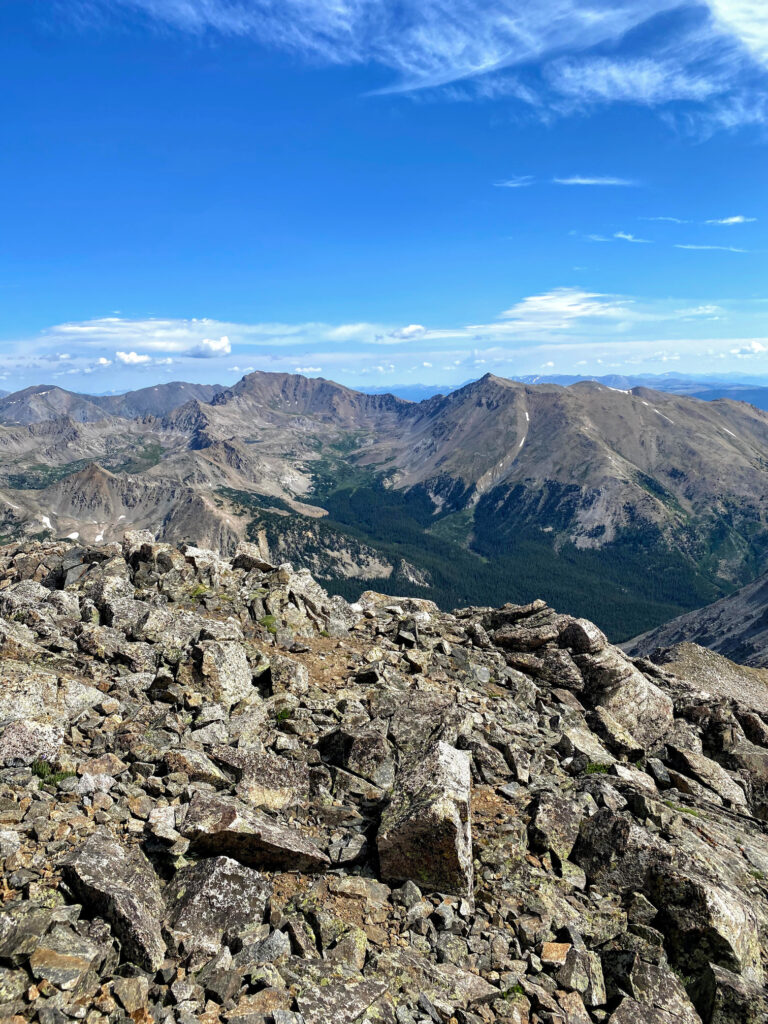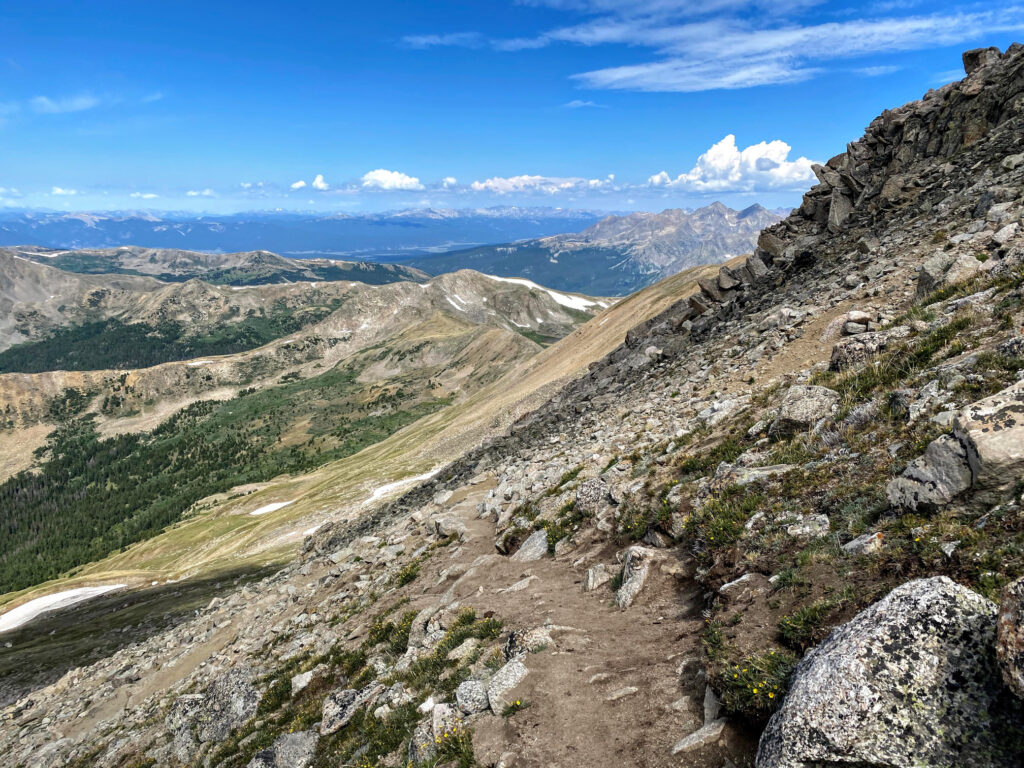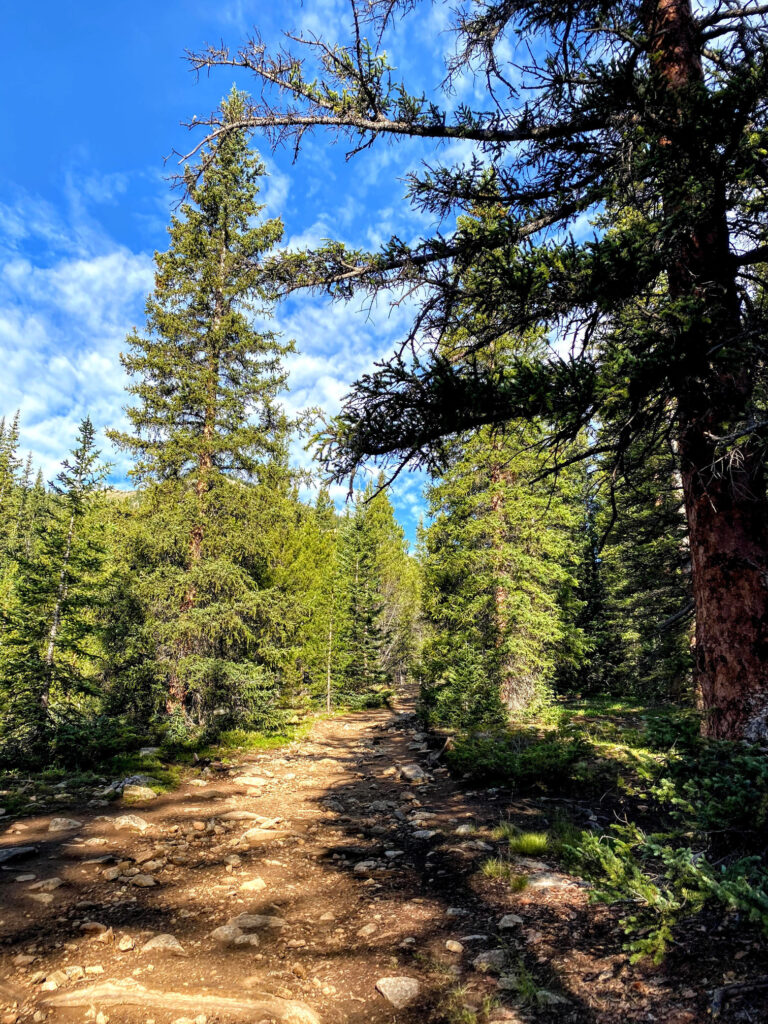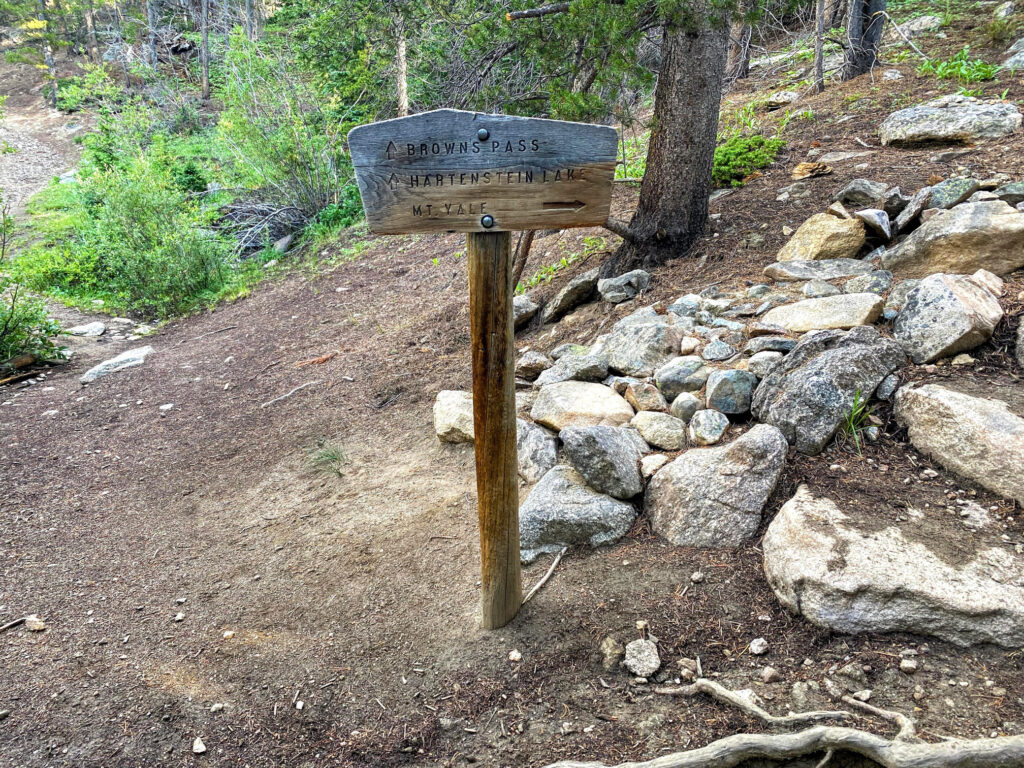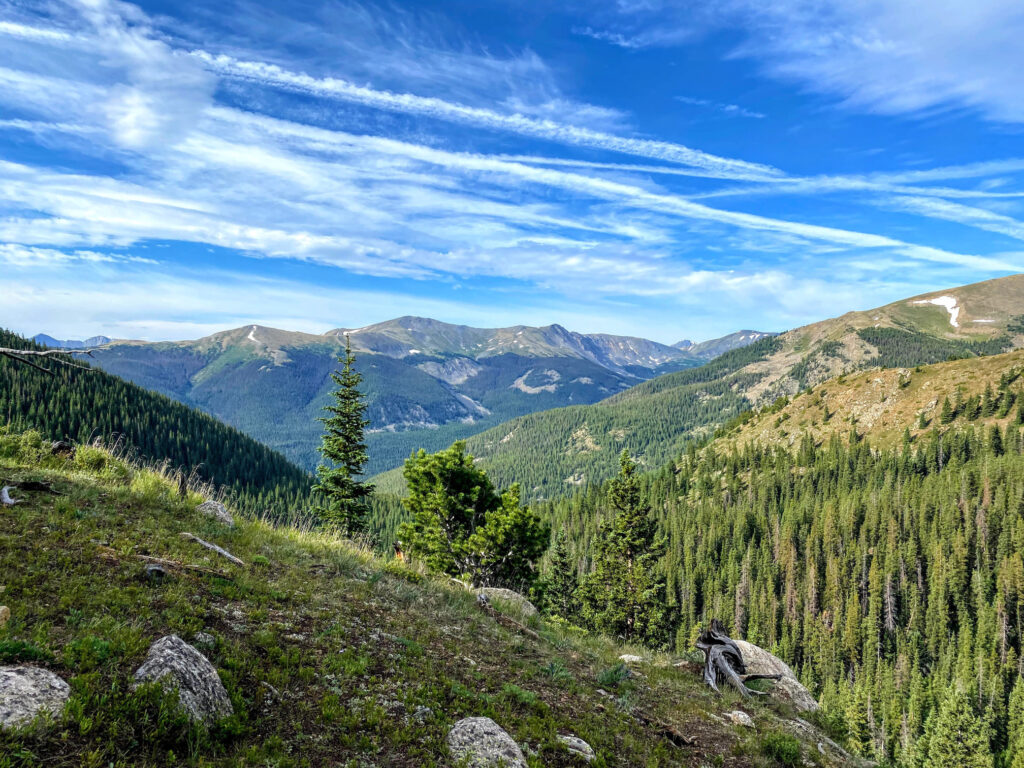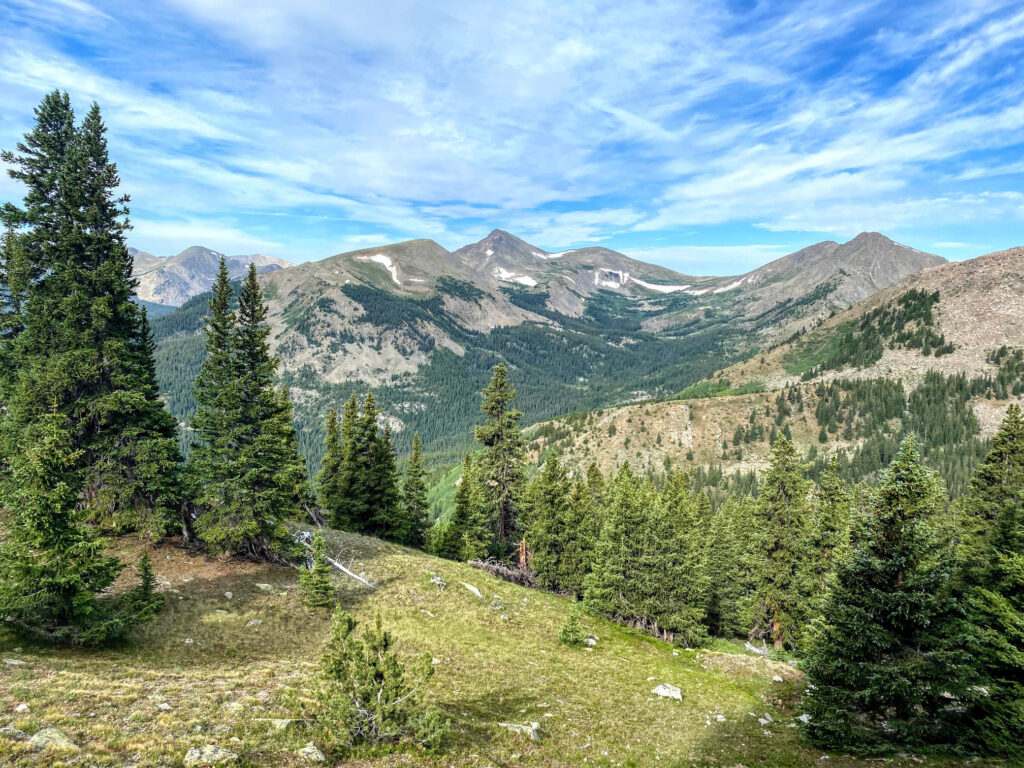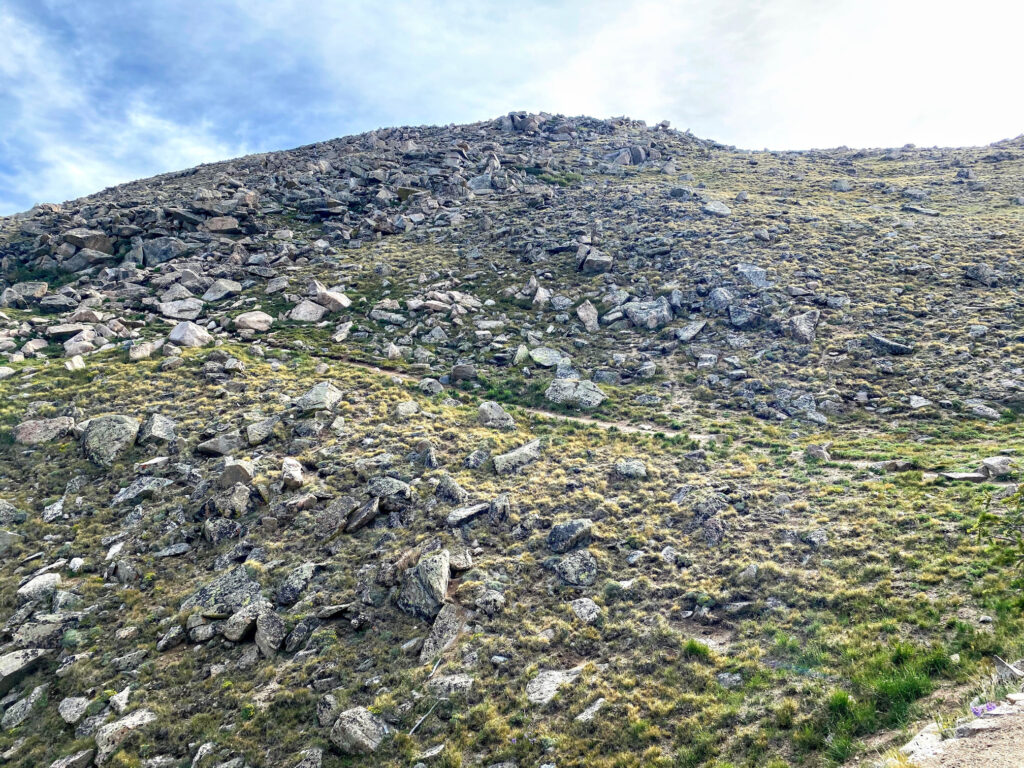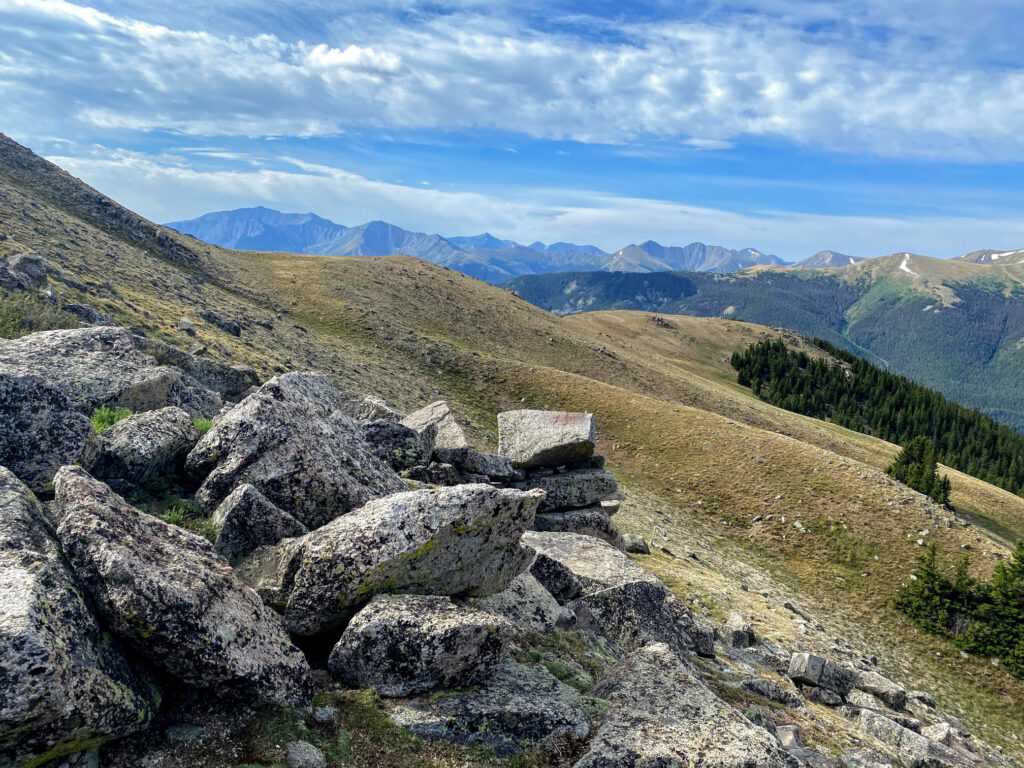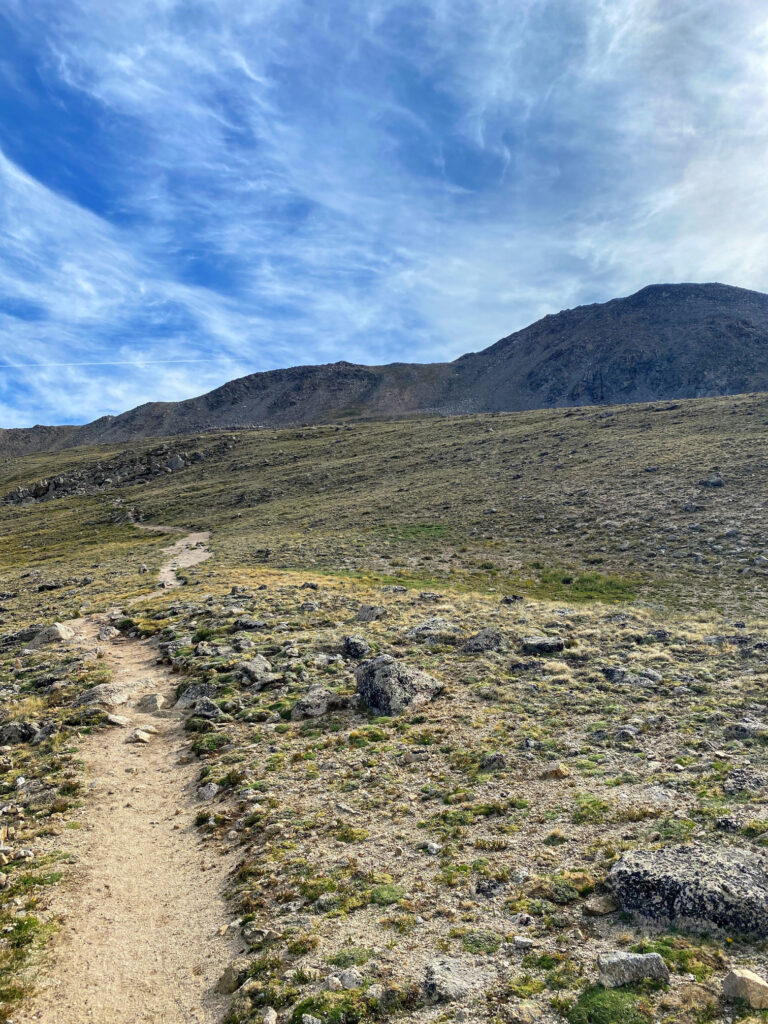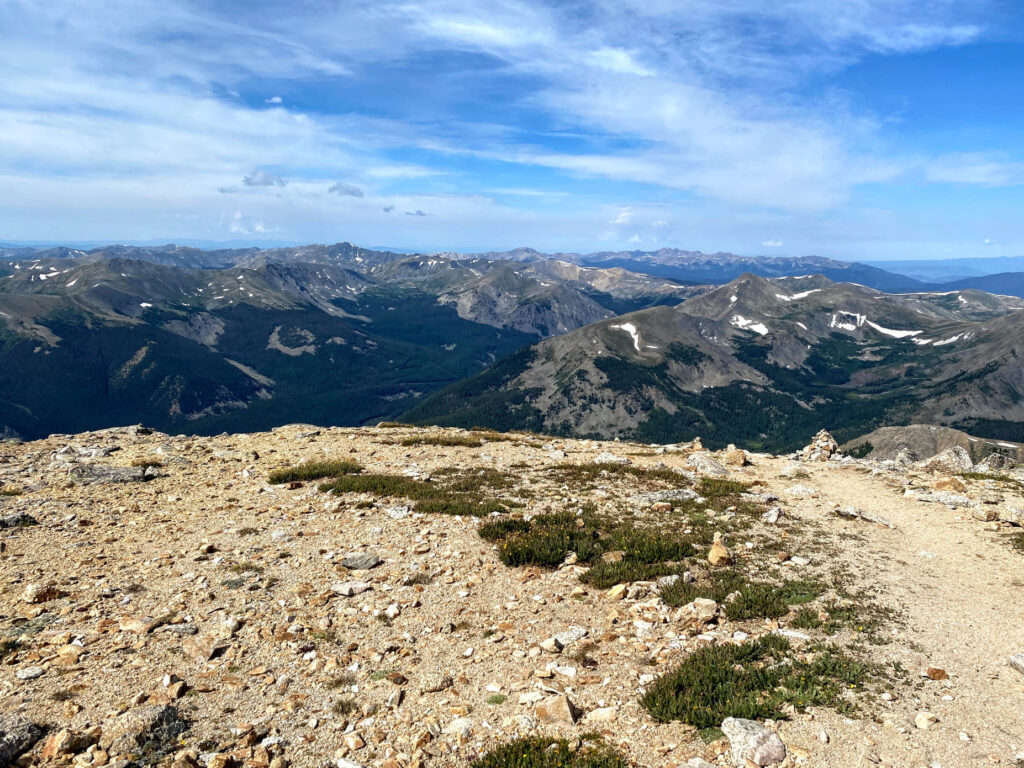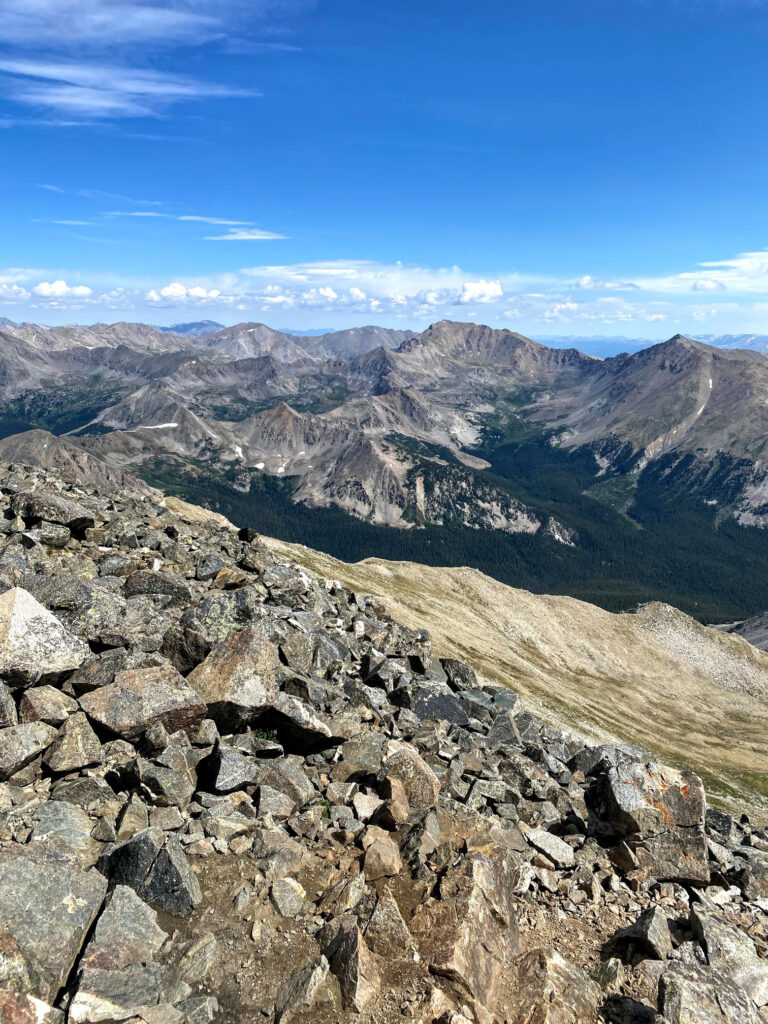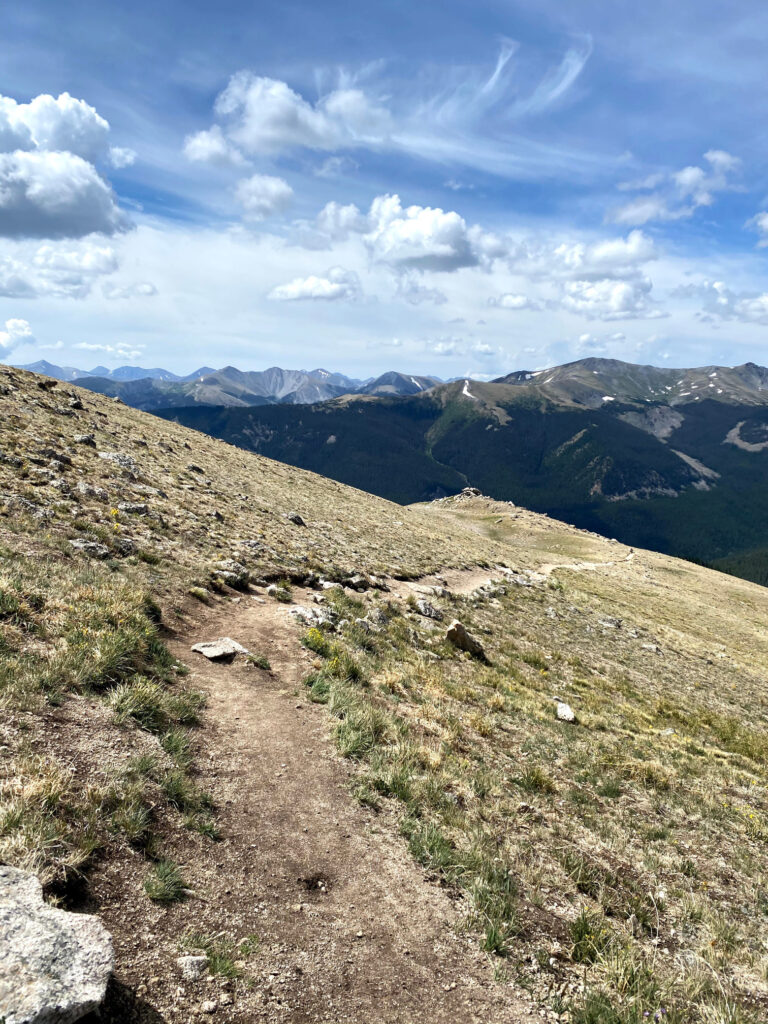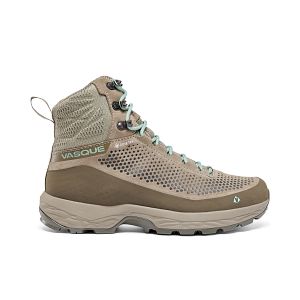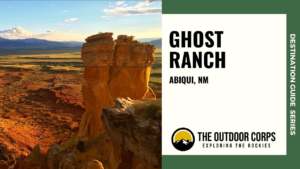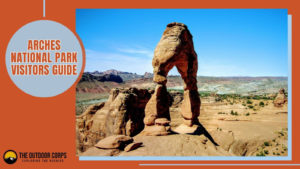Mount Yale (14,200ft.) is a 14er mountain located in the Sawatch Range, and more specifically within Colorado’s Collegiate Peaks Wilderness. Near the quaint town of Buena Vista, Mount Yale is the 21st tallest mountain in Colorado and is one of five fourteeners within the Collegiate subrange named in honor of prominent universities (Mounts Yale, Harvard, Columbia, Princeton, and Oxford).
The Southwest Slopes route to the summit of Mount Yale is the most popular route and considered the standard. Beginning at the Denny Creek Trailhead at 9,900ft., which is directly off of County Road 306, this Class 2 route is non-technical, but requires a steep 4,337ft. ascent and a roundtrip of 9.2 miles. But the hard work pays off with unparalleled views of neighboring high peaks in the Sawatch Range and far into the Arkansas River Valley.
HIKE REVIEW SERIES: Mount Yale
Mountain Information
Mount Yale is named in honor of the alma mater of geologist Josiah Whitney who had climbed the mountain in the 1860s with fellow surveyors from Harvard. Many may recognize the name Whitney, the former State Geologist of California, as Mount Whitney is named in honor of his contributions to American and Californian geology.
Located within the impressively beautiful Collegiate Peaks Wilderness of the San Isabel National Forest, Mount Yale towers over the Arkansas River Valley and the nearby town of Buena Vista. At 14,200ft., Mount Yale holds the distinction of the 21st tallest mountain in Colorado and the 7th tallest mountain within the Sawatch Range.
Mount Yale
- Summit Elevation: 14,200ft.
- Range: Sawatch
- Sub-Range: Collegiate
- Location: Collegiate Peaks Wilderness
- Nearest Town: Buena Vista
Trail Guide
Route Information
- Route: Southwest Slopes
- Class: 2
- Type: Out-and-Back
- Trailhead: Denny Creek
- Trailhead Elevation: 9,900ft.
- Route Length: 9.2 miles
- Elevation Gain: 4,337ft.
Route Overview
The Southwest Slopes route to the summit of Mount Yale is as straightforward as it is steep. Hikers can access the Denny Creek Trailhead right from the main parking area. There is no need for a 4WD vehicle, which is a major contributor to the massive popularity of this hike. A well established trail takes you through dense forest of lodgepole pine, spruce, and aspen. The ascent crosses Denny Creek and up Delaney Gulch and switchbacks to Mount Yale’s saddle, just below the summit. From the saddle, a few hundred more feet of ascent remain, which requires some steep Class 2 to easy Class 3 rock scrambling following rock cairns. At the summit, hikers are treated to awe-inspiring views of the surrounding Sawatch Range and more.
Route Steps
- Step 1 - Start at the Denny Creek Trailhead, accessed from the main parking lot area. If the main parking lot is full, an overflow lot is also available just a few hundred feet away along County Road 306. A restroom is located at the parking area.
- Step 2 - Continue along the rocky trail (FS1442) and head into a forested area that parallels Denny Creek. Pass through a forest of lodgepole pine, spruce, and more. Around .9 miles, reach an easy crossing with Denny Creek with some old logs serving as a bridge.
- Step 3 - At approximately 1.2 miles and 10,750ft., reach a trail junction. Take a right on the Mount Yale Trail. To the left, the trail branches to the North Fork of the Denny Creek Trail, which heads towards Brown’s Pass and Hartenstein Lake.
- Step 4 - Continue the ascent through the forest, noticing more aspen trees along the way. Around the 2.0 mile mark, at 11,250ft., reach another primitive log bridge to cross the Delaney Gulch stream. After a few more hundred feet of hiking, you’ll start to leave the dense forest.
- Step 5 - Continue the ascent up Delaney Gulch and at around 11,600ft. the trail will turn eastward. Great views will start to come into perspective, and only get better from here on.
- Step 6 - At around the 3.0 mile mark, the trail mellows a bit, affording a great opportunity to rest and take in the views before a much steeper ascent.
- Step 7 - Past 12,000ft. the trail starts an ascent through beautiful rocky slopes. Conserve energy, as the ascent will continue to increase in steepness.
- Step 8 - Ascend the trail and weave through rocks and boulders along the trail. Don’t forget to pause and take in the extraordinary views.
- Step 9 - Mount Yale’s saddle will come into better view. The accompanying photo is from approximately 12,550ft., so there is still a lot more climbing to complete at this juncture.
- Step 10 - The trail up the talus slope towards the saddle is well maintained. Switchbacks make the ascent much more manageable while hiking up the steep slope.
- Step 11 - At the top of the saddle, around 13,900ft., the views are just spectacular. There is still a few hundred feet of steep scrambling to do to reach the summit.
- Step 12 - Rock cairns guide the way along the scramble to the summit. The scramble is rated Class 2 to easy Class 3. Although the scramble is not very exposed, do be deliberate with your steps and take care to follow the cairns to simplify the approach.
- Step 13 - Reach the 14,200ft. summit and take in the views of neighboring Sawatch Range mountains and much more. Mount Harvard and Mount Columbia are prominently featured to right in the accompanying photo.
- Step 14 - Descend the way you ascended, doubling back off of the summit and back down the saddle. The views on the way down are simply stunning, as the descent faces towards mountain vistas.
- Step 15 - The return trip back to the Denny Creek Trailhead is 4.6 miles from the Mount Yale summit. End back at the trailhead’s main parking area and relish the accomplishment of climbing the 21st tallest peak in Colorado.
Planning Tips
Getting There
From downtown Buena Vista, CO, it is about a 20 minute drive to the Denny Creek Trailhead. Head west on County Road 306 (W Main Street closer to town) for about 11 miles. The Denny Creek Trailhead parking area and overflow parking area will be on the righthand side of the road.
Parking
Parking for about 40 vehicles is available within the main parking area for the Denny Creek Trailhead, located off of County Road 306. A smaller overflow parking area for about 15 vehicles is adjacent to the main parking area. Similar to all 14er hikes in Colorado, Mount Yale is extremely popular and parking spots fill quickly. So, plan to arrive early or secure a nearby campsite the night before to prepare for an alpine start.
Camping
If you intend to camp before or after your hike, the Collegiate Peaks Campground is very close to the Denny Creek Trailhead, just down the road on County Road 306. Situated along Middle Cottonwood Creek, the Collegiate Peaks Campground has approximately 40 sites. Some of the campsites are reservable, but many are first-come, first served. Campsite fees are $22 per night.
If the Collegiate Peaks Campground is full, try the nearby Cottonwood Lake Campground. All campsites at the Cottonwood Lake Campground are $22 per night and are first-come, first-served.
Pets
Dogs are permitted on leash. Note that the last portion of the hike, which requires a scramble to the summit, could pose challenges for some dogs. For that reason, we do not advise bringing your pet. If you do opt to bring your pet, please abide by leash regulations.
Weather Forecast
Always check the weather forecast before venturing into alpine country. During the summer time in Colorado, thunderstorms and lighting frequently occur at high elevation and you should proceed with caution. If the weather is not ideal, plan your 14er summit adventure for another day. Safety first!
RECOMMENDED HIKING APPAREL AND GEAR
Ten Essentials
When hiking in Colorado, you should always be prepared for sudden changes in weather, especially on 14er hikes. Therefore, you should carry the appropriate type and amount of gear, clothing, food, water, and other essentials. For certain, make sure that your packing list includes the Ten Essentials. It’s best to always be prepared!
Hiking Boots
The Vasque Torre hiking boots are incredibly lightweight, provide excellent traction, and are quite affordable for their versatility. We like the Vasque Torre’s for everyday hiking that includes a bit of scrambling. In addition, with the “GORE-TEX” construction, you don’t have to worry about damp feet if the weather turns or you have to splash through streams or puddles along the way.
Hiking Pants
We love prAna’s hiking pants for their quality and versatility. Indeed, their Zion (for men) and Halle (for women) are great on- and off-trail, especially for travel. Constructed with a durable UPF-50 fabric, a water-repellant finish, and utility pockets, these have become a staple in our wardrobe. Remember that it can be rather chilly at alpine elevations, so consider hiking pants rather than shorts (both for warmth and sun protection).
Hiking Shirt
It can get chilly during alpine outings, particularly when you start early in the morning. Therefore, we typically opt for a long sleeve but lightweight shirt to keep us warm when it’s cold, but keeps us cool when we are working up a sweat later in the day. The no-cotton rule applies to shirts just as it does for pants and other articles of clothing.
Our preferred hiking shirt in the summer is Outdoor Research’s Echo Hoody because of its UPF sun protection qualities and lightweight (4oz.) breathable construction. The shirt has a hood for added neck protection and has thumbholes to protect your hands from sun exposure, if you opt to not wear sun gloves. Outdoor Research also makes different varieties of the Echo shirt (e.g., quarter zip, long sleeve without hood, t-shirt, etc.) if you prefer another style.
Insulated Jacket
The Arc’teryx Atom is easily our favorite insulated jacket. Yes, there may be lighter weight alternatives on the market, but we love the style, fit, packability, and function. Wear the Atom during early morning starts or when you reach the mountain summit. It’s a great addition to an outdoors wardrobe and comes in handy when the temperature dips.
Hiking Socks
For most of our hiking needs, we like Darn Tough socks over the multitude of options on the market. They last long and have an ironclad guarantee. In addition, Darn Tough has a variety of designs, ankle lengths, and cushioning options to choose from. We like the Hiker quarter length with light cushioning.
Headwear/Face Covering
We often wear a Buff as a neck gaiter to protect from the sun, given its UPF 50 protective construction. Buffs are also a great option to use as a face covering on the trail. In fact, there are 12+ ways of wearing a Buff, so it’s a versatile piece of gear.
Day Pack
To summit Mount Yale, we like REI Co-op’s Flash 22L pack for its affordability, lightweight design, and overall versatility. This pack has enough storage for a day hike and side pockets are available to store Nalgene bottles or other equipment. It is also hydration reservoir compatible. We think the 22L version has the perfect capacity, though REI does have an even smaller Flash 18L with a drawcord top.
Trekking Poles
Although trekking poles are optional and a matter of preference, we prefer to use them for added stability. We recommend choosing the lightest weight poles your budget can afford. The Black Diamond Distance Z is our top choice due to its extremely lightweight construction. If you are seeking just one pole, rather than two, consider Gossamer Gear’s LT5, which can be purchased individually.
Helmet
There are plenty of good, versatile helmets in the market place, but we favor Petzl’s helmets for mixed use – mountaineering, climbing, etc. Plus, Petzl is known for making high quality climbing equipment and is a brand we trust with such a vital piece of safety gear. The Petzl Sirocco is our go-to option for its comfort and design, but Petzl has a wide array of quality helmets at various price points.
recommended books
In our opinion, the best guidebook for information on Colorado’s 14er mountains is Gerry Roach’s Colorado’s Fourteeners: From Hikes to Climbs. All other guidebooks pale in comparison. Thus, this book will suit you well for hiking Mount Yale. Although Roach’s book is incredibly detailed, you’ll still want to carry a topographical map such as National Geographic Trails Illustrated Map for the Collegiate Peaks Wilderness Area. In addition, we included a couple of our favorite field guides for plant and bird identification. These guides provide useful information that adds to the outdoors experience and help answer questions about animal and flower species.
- Colorado’s Fourteeners: From Hikes to Climbs
- Collegiate Peaks Wilderness Area – National Geographic Trails Illustrated Map
- Rocky Mountain Wildflowers Field Guide
- Sibley Birds West: Field Guide to Birds of Western North America
- Roadside Geology of Colorado
Disclosure: Please note that this post contains affiliate links. We may receive a small commission if you buy a product or service through an affiliate link. This revenue helps us provide readers with helpful content to plan amazing adventures.

